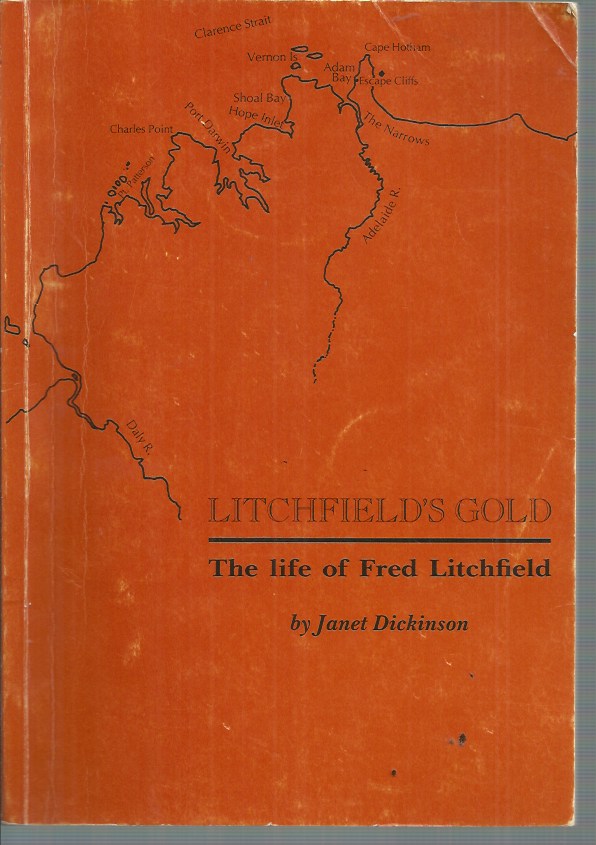AUSTRALIANA Aboriginal Northern Territory Gold
Account of conflict between Finniss expedition and Aborigines at Adelaide River in 1864.
- 93 p. : ill. ; 21 cm. #210124 Signed by Author. First Edition. (A blank fep may have been removed?)
- Litchfield, Fred H. (Frederick Henry), 1832-
- Northern Territory — Discovery and exploration
- Adelaide River (NT Top End SD52-08)
- Litchfield (Daly River NT Top End SD52-08)
- In 1864 the South Australian Government mounted an expedition to the Northern Territory for the purposes of survey and settlement. The leader was Boyle Finniss who, having been Commissioner of Police, knew Fred Litchfield’s late father well. Having struggled to make a success of his pastoral run, Litchfield relinquished the lease to join the Finniss party of some forty officers and men as a stockman and labourer. Tolmer had recommended him as a good worker.
Finniss, who was instructed to examine the Adelaide River and environs, chose a settlement site at Escape Cliffs. Litchfield was 32 years old when he arrived by sea in the Northern Territory, which he was immediately enthusiastic about, despite being speared at Escape Cliffs in August 1864. During 1864–65 Litchfield’s reputation rose as he, initially with surveyor W. P. Auld, took part in, and then led, exploration parties in the Howard River, Darwin, Northern Territory, Batchelor, Northern Territory, Adelaide River, Finniss River, and Daly River regions.[20] In doing so, Litchfield was among the first Europeans to walk the area that became the streets of Darwin, Northern Territory. Having had experience on the Victorian goldfields, it was at the Finniss River that the presence of gold arrested his attention; hence Litchfield went down in history as the man who discovered gold in the Northern Territory.[21] Being loyal and industrious, Litchfield was so well regarded by Finniss that on 28 July 1865 he was appointed Acting Inspector in command of his newly formed (and short-lived) Rural Constabulary, regarded by many as outside his authority.
Over time the decisions of Finniss became so criticised that the South Australian Government recalled the party with the intention of holding an inquiry into his conduct. In December 1865 the barque Ellen Lewis left the Northern Territory carrying Finniss and most of the witnesses, including Litchfield, to arrive back at Adelaide in February 1866.[22] Litchfield then appeared as a witness favourable to Finniss at the Northern Territory Commission hearings that took place during March–April 1866.[23]
- In his time Litchfield was one of the few Europeans that could see great agricultural and pastoral prospects for the Northern Territory. His gold discovery, though inconclusive, stimulated the rush in the early 1870s that hastened its development. He is commemorated in the naming of Litchfield Municipality and Litchfield National Park, among other places.
